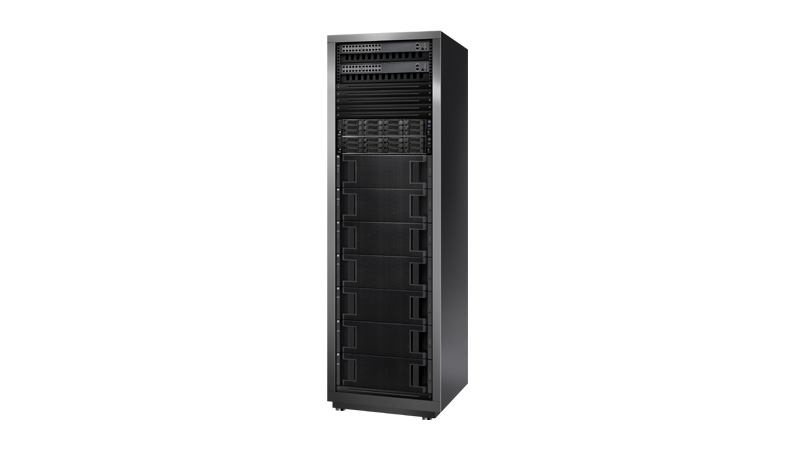| Model
|
UDS
|
| Hardware Specifications
|
Description
|
| System architecture
|
Distributed object storage architecture (the system consists of access nodes, storage nodes, and switches)
|
| SmartDisk
|
Smallest storage unit integrating ARM processor, disk, and network interfaces
|
| Storage node
|
4 U high-density storage node with 75 disk slots; max. 300 TB capacity per enclosure; max. 2 .1PB capacity per cabinet
|
| Disk types
|
Enterprise-grade SATA disks
|
| Service ports
|
Single access node: 2x10GE (a data center supports up to 168 storage nodes)
|
| Single storage node: 4x10GE
|
| System configuration
|
Minimum configuration per cabinet: two access nodes+one storage node+two 10GE switches
|
| Maximum configuration per cabinet: two access nodes+seven storage nodes+two 10GE switches
|
| Software Specifications
|
Description
|
| Max. number of buckets
|
100 million
|
| Max. number of objects in one bucket
|
50 million
|
| Max. number of objects
|
10 billion
|
| Interface compatibility
|
Amazon S3 interface; Symantec NBU and CommVault Simpana backup interfaces
|
| Multi-data-center deployment
|
Support unified storage resource pool across regions while gaining data redundancy between three data centers
|
| Resumable transfer
|
Supported (applicable to large-scale data migration)
|
| Storage optimization measure
|
Support data deduplication and compression
|
| Data security
|
Strict AK/SK authentication; bucket-based or object-based access control list (ACL)
|
| Data durability
|
Support flexible N + M data redundancy policy, Single data center up to 99.9999%
|
| Online expansion
|
One-touch capacity expansion and performance improvement without interrupting or degrading services
|
| Data self-healing
|
Automatic object-level data recovery based on multiple nodes processing in parallel; max. recovery speed is more than 1 TB per hour
|
| immediate maintenance unnecessary
|
Automatic detection of disk failure rate; in-time alarm notification; batch replacement of fault disks, eliminating the need for immediate replacement and reducing required maintenance manpower
|
| Solution Specifications
|
Description
|
| Web disk
|
Secure and convenient shares accessible to PC clients, mobile phone clients, and browsers
|
| Various data sharing modes including automatic data synchronization, sharing with friends/groups, and external links
|
| Cloud backup
|
To provide users with online backup services based on the public cloud, support for optimized WAN transmission, user access authentication and encryption, etc. Meet the demand of multi-tenancy, cross-regional data backup
|
| Active archive
|
Tiered storage and compatibility with heterogeneous storage, achieving maximum ROI from storage devices of different cost-effectiveness
|
| Archived data accessible at any time; transparent data migration; neglectable changes to the existing network
|
| Physical Specifications
|
Description
|
| Access node
|
AC power supply: 100 V to 127 V or 200 V to 240 V in 1+1 redundancy
|
| Power consumption: 350 W (maximum)
|
| Dimensions (H x W x D): 86.1 mm x 446 mm x 585 mm (2 U)
|
| Weight: 18.5 kg (unloaded enclosure)
|
| Storage node
|
AC power supply: 90 V to 264 V in 2+2 or 1+1 redundancy
|
| Power consumption: 1350 W (maximum)
|
| Dimensions (H x W x D): 176.5 mm x 446 mm x 790 mm (4 U)
|
| Weight: 45.2 kg (unloaded enclosure); 97.7 kg (fully loaded enclosure)
|




